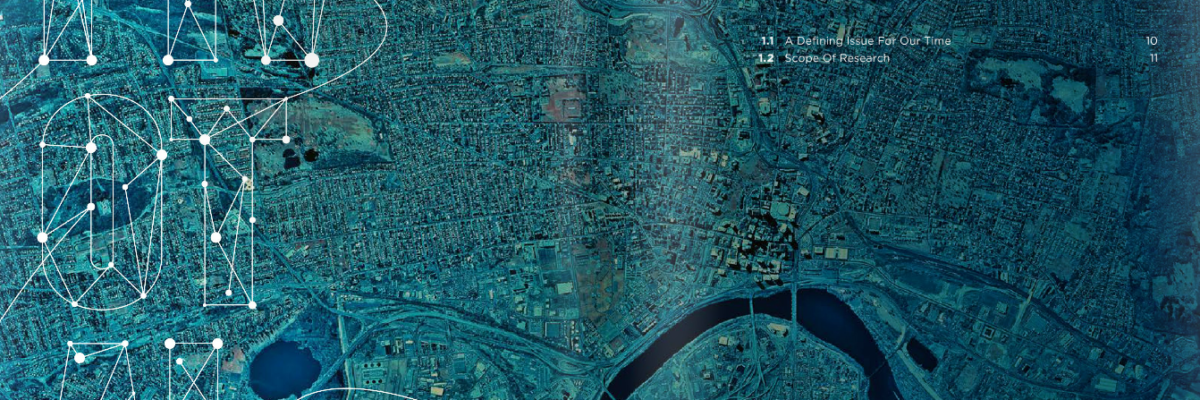Amidst the climate information overload driven out of the Paris conference, a fantastic research report was released to guide the way for city climate action over the next five years. Prepared by C40 and global consulting firm Arup, the report Potential for Climate Action considers actions cities need to take to significantly reduce carbon emissions, with a focus on the barriers that must be removed to allow more progress.
While global in nature, the report has some affirmations and key insights for directions being taken in Toronto and the region, and for the challenges we are facing.
2,332 Priorities …..
The report prioritizes 2,332 actions that should be targeted immediately, representing a global opportunity to reduce carbon emissions by 450 million tonnes by 2020. The majority of these priority actions – 66% – are in the buildings sector. This confirms that within the 2020 target time frame – and beyond – reducing emissions associated with energy used in buildings is a number one priority. Exciting work? Not really. We are talking better boilers, good old insulation and heat recovery ventilation. Technology oriented? Probably not – we have many excellent and proven technologies at our disposal which are simply not yet fully deployed. But a co-benefit of this work is creation of local employment, because retrofit work is labour-intensive. It also supports improvements to the indoor air quality and comfort of older buildings. And based on current case studies implemented by TAF, the investment is net positive.
The report also prioritizes improvements to mass transit and in Toronto this file is being pursued with vigour, although subject to many challenges – see below. Focusing on solutions in the areas of community scale development and private transport are also identified as significant second priority actions.
With respect to the role of cities in advancing the priority actions, the report proposes that cities should be taking the lead in the areas of passenger transport, urban planning, promotion of walking and cycling, transit development, and more efficient transportation management. With respect to buildings, the report suggests that cities are generally playing an implementation role, carrying out national policies related to buildings. This doesn’t quite align with the Toronto context, where the City has been playing a leadership role both in the new buildings sector – applying advanced local energy efficiency requirements through the Toronto Green Standard, and in the retrofit sector, where the City has taken the lead in promoting an Energy Reporting and Benchmarking bylaw, set to be adopted by the Province of Ontario later this year.
…. And just about as many challenges
The report highlights three areas that represent the toughest obstacles to achieving the emissions reductions associated with the priority actions:
Economic and financial challenges relating to access to capital, limited financial independence, making the financial case for action, and difficulties in cooperation with the private sector.
Political and leadership challenges including those related to city governance and those associated with building relations with community partner.
Institutional, regulatory and legislative challenges related to “silos” of work within cities and other levels of government, and inadequate regulatory regimes.
While a lack of funding represents a fairly predictable obstacle to getting on with what needs to be done, and certainly resonates in Toronto with respect to our ongoing challenges in accessing funds to build mass transit, the report strongly underscores the need for cities to support skill-building in the area of partnering. “Cities that collaborate with other actors,” the report states, “are able to deliver twice as many climate actions as those that govern through a less partnership-based approach.” Developing long-term climate solutions in the context of short-term planning and electoral cycles is also a common difficulty faced by cities around the globe.
The report is extremely thorough in parsing out the nuances of the top challenges, along with four other problem areas – information and knowledge, social and cultural, technology and infrastructure, and physical and human context, and makes the point that these obstacles are often inter-linked, forming a mutually-reinforcing set of road-blocks.
However, the authors note that many of the problem areas stem from government processes and procedures, and as such, they are problems that can be resolved by new thinking. “Of the challenges faced by cities, 65% are associated with government entities. This is a powerful finding, indicating that city potential is not being held back by fundamental and unchangeable forces, but by the way in which we organise and operate. These are problems that can, and hopefully will, be addressed.”
Let’s hope they are right about this, because a final key point made by the authors is that every single one of the 27,000 city actions they identify in the report will ultimately need to be accessed to achieve the global emission reduction goals embraced in Paris. And that’s going to take quite a lot of new thinking.

